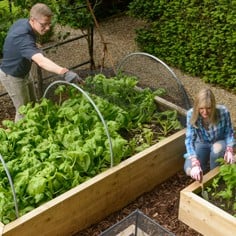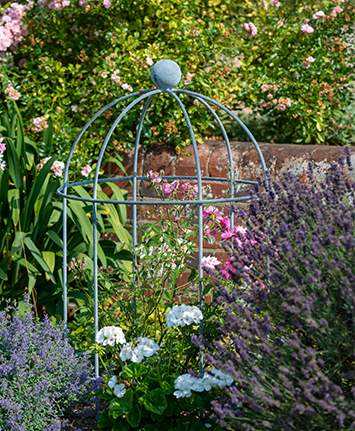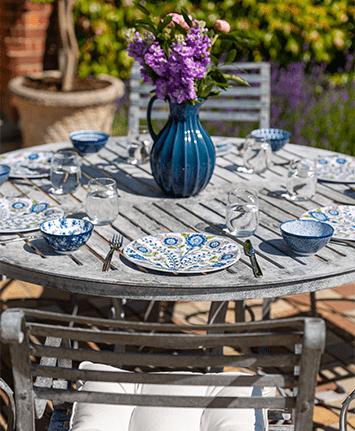Whitefly Control Programme - 3 Applications
The Whitefly Control Programme consists of 3 applications of the parasitic wasp Encarsia formosa, regarded as the most effective way to control whitefly in the greenhouse
Read More
The Whitefly Control Programme consists of 3 applications of the parasitic wasp Encarsia formosa, regarded as the most effective way to control whitefly in the greenhouse.
Supplied as pupae on cards which are simply hung in a shady position throughout the crop level with the lower leaves of the plants, the Whitefly Control Programme is supplied as a repeat programme of Encarsia formosa, every week for three weeks to ensure the pest is continually controlled.
PLEASE NOTE - this item will be dispatched at the optimum time for application. The pest MUST be present before introducing this predator for control to be effective - please do not order beforehand.
- Whitefly Control Programme consists of 3 applications sent weekly for three weeks
- Each application is supplied as 25 hanging cards with 60 pupae on each card - a total of 4,500 pupae per programme
- Single applications also available - see our Whitefly Control
- Open box in greenhouse
- Always handle cards by top to prevent damaging scales in circle
- When using in tomato and cucumber crops, hang the cards in a shady position among the foliage around 1m below the top of the plant - and space the cards evenly
- For pot plants, again evenly place the cards in a shady position level with the lower leaves but not in contact with the soil
- Regular applications will keep whitefly under control
- Use within 18 hours of receipt or keep outer box in cool place (between 5-10 degrees C)
- Never leave box, or place cards, in direct sunlight
- Remove sticky traps before introducing predator
Live Pest Control Delivery
Being a live product the parasitic wasps are ordered weekly every Thursday. These are then delivered to you by the end of the following week.
WHITEFLY
Order; Hemiptera
Family; Aleyrodidae
Symptoms
The presence of the various species of whitefly is indicated by large amounts of sticky honeydew and sooty moulds on the upper surfaces of leaves, and by a yellow mottling where the whitefly have fed. Whitefly can transmit several strains of plant viruses and infested plants suffer from a lack of vigour. Of the greenhouse crops, tomatoes and cucumbers are usually most severely infested, although this pest will attack many other common glasshouse and houseplants. Also at risk are cabbages, brussels sprouts and other brassicas, rhododendrons and azaleas.
Description and Life Cycle
Whiteflies, both adults and eggs, are found on the underside of leaves. Adults are small grey to white winged flies, measuring 1.25 –2mm, and usually live for a month. Each female adult will lay up to 200 eggs on the underside of leaves, often in neat circles. These eggs are initially white but darken to an almost black colour before hatching into a nymph, which will crawl around the leaf surface before settling to feed. The legs of the nymph then degenerate and the nymph becomes an immobile scale, feeding for 2 weeks before pupating. Adults emerge 10 days later and begin feeding immediately. The development from egg to adult can be as rapid as 3 weeks at 21 degrees centigrade but will take much longer at lower temperatures.
Biological Pest Control Treatment
The parasitic wasp, encarsia formosa, has been used with great success to control whitefly populations since 1926. Encarsia females lay eggs directly into the immobile whitefly scales which remain white and develop normally until the encarsia pupates, turning the scale black. The adult encarsia will emerge around 10 days later. The presence of encarsia formosa is indicated by the black parasitised whitefly scales alongside the un-parasitised white scales. Leaves containing black scales are introduced to the greenhouse environment, and under ideal conditions the adults, when they emerge, can lay between 12-15 eggs per day. Keeping the temperature between 18 – 21 degrees centigrade with good light intensity will result in maximum activity. As with all biological predators, it is important not to introduce an excessive number of encarsia formosa as they depend on the whitefly scales to continue their life cycle.
Live Pest Control Delivery
Being a live product the parasitic wasps are ordered weekly every Thursday. These are then delivered on Wednesday of the following week for delivery by the end of the week.
For example an order placed on a Monday would be ordered on Thursday, received the following Wednesday for delivery by the end of that week.
What The Press Say
telegraph.co.uk2011-09-13
Clematis Frustration
Featured Product

























